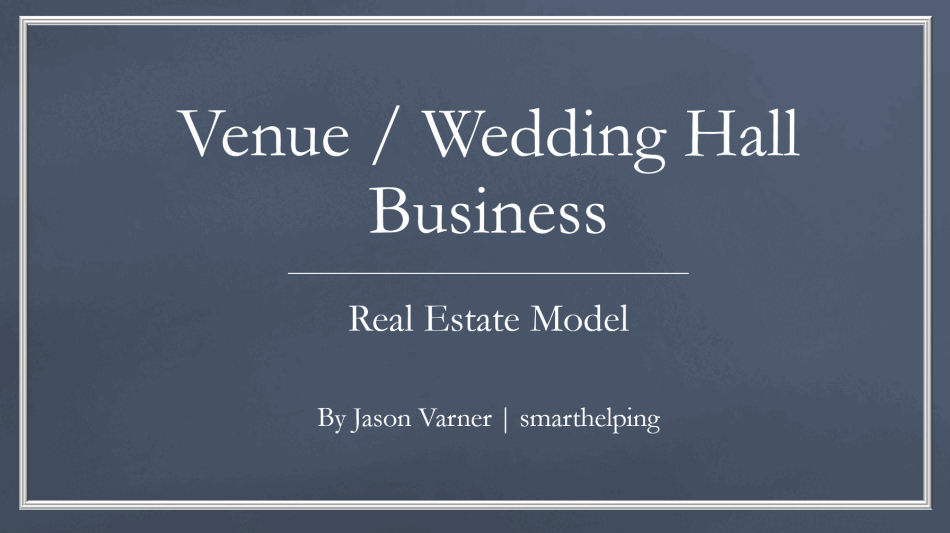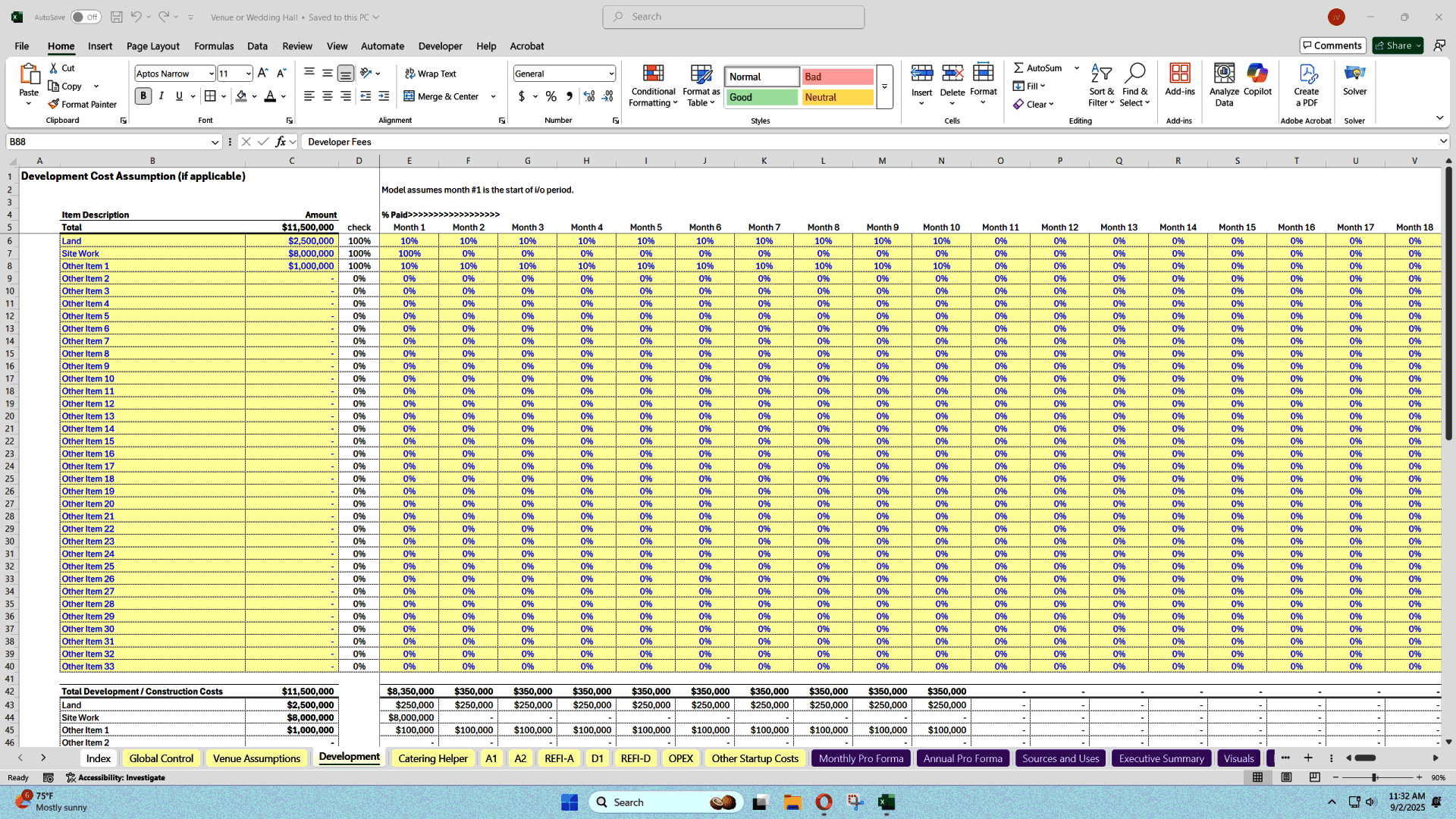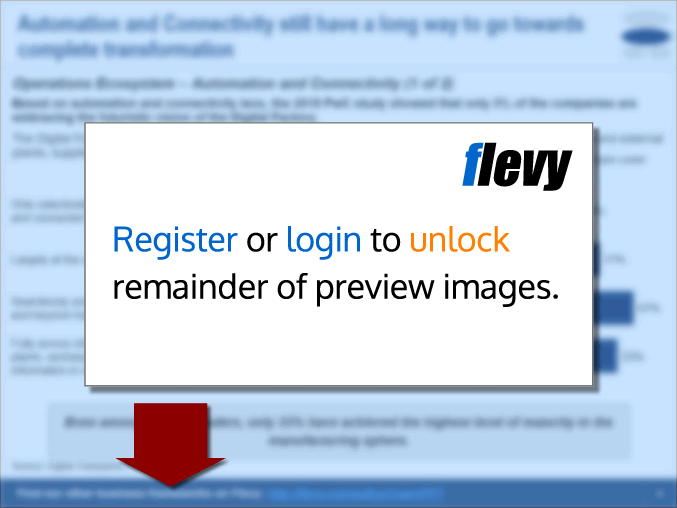Event Space Investment Model (Hospitality + Property) (Excel XLSX)
Excel (XLSX)
VIDEO DEMO
BENEFITS OF THIS EXCEL DOCUMENT
- Make better buy‑vs‑build‑vs‑lease decisions by seeing how each path changes cash needs, debt/REFI timing, and exit proceeds.
- Translate your event strategy into dollars with detailed seasonality, pricing, and margin logic that rolls up to credible NOI and monthly/annual pro formas.
- Present investor‑ready economics with four JV waterfall options and automated IRR/Equity Multiple reporting for clear, defensible terms and distributions.
REAL ESTATE EXCEL DESCRIPTION
Core Structure & Flexibility
Hybrid hospitality + real estate model purpose‑built for event venues (weddings, corporate, private).
Three operating paths: Acquire, Develop (ground‑up), or Lease‑only (set purchase/dev to zero; enter lease in OPEX).
Modular design: Hide tabs you don't use; four standalone JV waterfalls summarized on Global Control.
Acquisition / Development
Acquisition inputs: Purchase price, acquisition loan, optional seller financing, general loan terms, renovation budget.
Development tab: Hard/soft cost budget, monthly spend curve, LTC target, non‑financed cost support.
Construction loan: Dynamic I/O period, rate, month of conversion to permanent loan, and optional future REFI.
Refinancing & Valuation
REFI engine: User‑defined month; valuation from cap rate on T‑12 NOI at the refi date; proceeds sized to LTV.
Exit value logic tied to operating income (works even for lease‑only scenarios).
Revenue Engine (Venue Assumptions)
Up to 3 event types, each with annual counts and monthly seasonality (% of yearly events by month).
Five revenue streams: Rental fee, catering, bar/beverage packages, add‑ons, and 3rd‑party referral fees.
Catering helper with three package tiers and margin modeling.
Bar/add‑ons margins plus bartender cost logic to drive cost of service.
Direct fixed costs per event (up to 9 slots per event type).
Operating Expenses (OPEX)
Calendarized fixed costs: Start month, starting annual cost, and growth rate for items like maintenance, repairs, staffing, legal.
Revenue‑linked costs: %‑of‑revenue items (e.g., property management fees).
Lease support: Enter lease expense here when modeling a service‑only operation.
Cash Flow Management
Operating cash account tracking driven by cash invested and cash distributed over time.
Automatic separation of funding needs through stabilization vs. ongoing operations via Sources & Uses logic.
Joint Venture Waterfalls (4 Scenarios)
Monthly IRR hurdles: Define contribution rates, hurdle tiers, and distribution splits.
Simple pro‑rata split: Minimum equity requirement; automated contributions/distributions (no hurdles).
Annual IRR hurdles: Runs off DCF Analysis to align cash flows to annual periods.
Preferred return: Set investor pref; define splits during pref phase, through return of capital, and thereafter.
Automation notes:
Scenario 2 is fully automated.
Scenario 1 automates distributions once equity is set.
Scenarios 1, 3, 4: adjust equity invested (and distributions for 3 & 4) as assumptions change.
Reporting & Outputs
Sources & Uses (detail + summary): Dynamically updates with the minimum cash position month; clearly separates stabilization cash needs from operations.
Investor KPIs: IRR and Equity Multiple for each JV scenario.
Executive views: Annual Executive Summary and a live summary on the primary venue assumptions tab.
Financial statements: Monthly & Annual Pro Forma showing detailed revenues, expenses, NOI, debt service, refi/exit, and final cash flows.
If you want, I can condense this into a three‑tier feature grid (Essentials / Pro / Capital Stack) or an Amazon‑style bullet block optimized for marketplace listings.
Got a question about the product? Email us at support@flevy.com or ask the author directly by using the "Ask the Author a Question" form. If you cannot view the preview above this document description, go here to view the large preview instead.
Source: Best Practices in Real Estate, Event Industry, Integrated Financial Model Excel: Event Space Investment Model (Hospitality + Property) Excel (XLSX) Spreadsheet, Jason Varner | SmartHelping
This document is available as part of the following discounted bundle(s):
Save %!
Industry-specific Financial Models (40+)
This bundle contains 67 total documents. See all the documents to the right.









